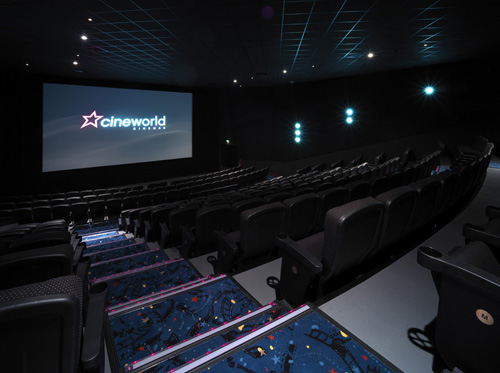Cinema advertising has come a long way since its inception. Cinema offers marketers a unique platform for advertising their products and services and allows the development of big creative ideas that wouldn’t work on any other platform. Cinema attendance is currently seeing a resurgence, with the Cinema Exhibitor’s Association putting attendance for February 2011 at over 17 million, a 10 per cent increase year-on-year. So how can marketers capitalise on this captive audience?
When planning a cinema advertising campaign it is important to remember why consumers go to the cinema to watch a film; it is a night out and more of an experience than watching the same movie at home. This is something that marketers can tap into to really capture the imagination of cinema goers. The important thing is to integrate cinema into your planning right from the outset as this will give you time to plan a campaign that can utilised the cinema environment to the full.
Marketers can really play on the feeling of emotion at the cinema. Think outside of the normal, cinemas are a great place for experiential activity. For example Nestle’s campaign for Cookie Crisps played on its on-screen association with Rango, Hop and Rio 3D by running two national sampling campaigns. Nestle ambassadors distributed seventy four thousand samples of Cookie Crisps as well as money off coupons in cinema foyers. Foyer spaces offer a great place for marketers to set up experiential campaigns. Experiential activity is about getting consumers engaged with your brand and with the advent of smartphones there are new and exciting opportunities to tap into this communication method.
Cinema advertising doesn’t have to be a standalone campaign. It’s crucial these days to ensure that all activity is integrated and gives the consumer a seamless brand journey through your brand. Orange has a unique relationship with film and a fantastic example of a brand that has taken a fully integrated approach to its marketing. Orange Wednesdays are supported through its Orange Wednesday Film Club on Facebook, that now has thirty four thousand fans. Additionally it hosted BAFTA Night Live that enabled viewers to live chat online alongside the ceremony and its campaign, MovieZone, was an Orange-hosted Channel 4 ad break that was entirely made up of film trailers. Orange has been so successful with its film activity because it didn’t limit itself to the cinema, it used the cinema as a platform for wider integrated activity that really compliments its position in the cinema world.
The most important element of cinema advertising is to think big and that is the beauty of cinema; you have the space to create something that no other platform could support, and you can integrate it into any other marketing activity. A successful cinema advertising campaign can have a huge and lasting impact on an audience and no idea is too big to play out in a cinema environment.






